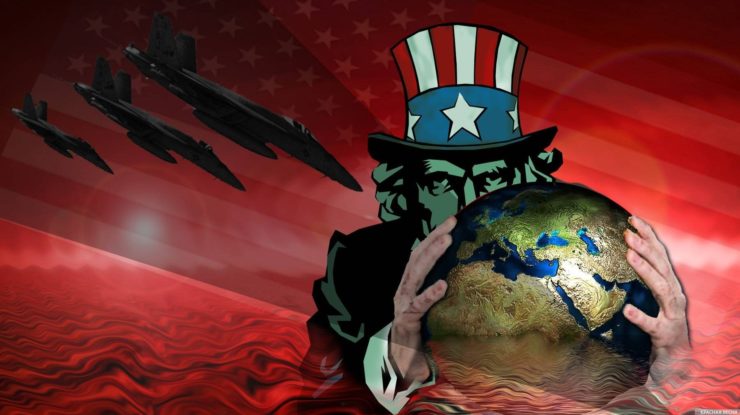
In the past two decades (2001-2023) since the 9/11 attacks that killed 3,000 people in New York, US wars, both direct and indirect, have caused more than 4 million deaths worldwide. Without mincing words, this is a deadly scenario, where Washington has relied on war as its preferred means of executing foreign policy. Its unabated support for Israel and its continuing supply of weapons to Ukraine are yet another reminder of Washington’s frequent reliance on direct and indirect wars to accomplish its goals. This scenario is unlikely to change regardless of which president occupies the White House. While Donald Trump was seen to be against US war in Afghanistan and made a pact with the Taliban in 2020 to withdraw US forces, it was Donald Trump himself who initiated the ‘trade war’ on China, which Joe Biden has been following steadfastly since 2020.
In fact, Biden faithfully expanded the scope – and the lethality – of the ‘war’ on China. In 2023, the Biden administration made a new pact with the Philippines to build four new military bases in the country. There is only one objective: to encircle China. These four new bases are in addition to the five existing ones. The militaristic nature of the US ties with the Philippines is the hallmark of US foreign policy that threatens world peace more than anything else. In qualitative terms, the expansion of military bases in the Philippines is not different from the expansion of the North Atlantic Treaty Organization (NATO) to include Ukraine and thus encircle Russia. This push led to Russia’s military operation in Ukraine – a conflict that is now metamorphosing into a proxy and “jihadi” war on Russia. The militarization of the Philippines could be a prelude to an actual conflict with China, where these bases could become launchpads for the US proxies to wage their “jihad” on China in the South China Sea and even beyond.
But it is not China alone that is the target. The US has more than 750 military bases around the world in more than 80 countries – a number that can singularly explain the US war machine’s ability to kill millions around the world. To continue to retain this deadly ability, the US has recently “upgraded” its security pact with Japan too. While the pact will be announced on the Japanese leaders’ visit to Washington on April 10, reports indicate a major overhaul to the presence and operation of the US forces in Japan. This would also include a new task force attached to the US Pacific Fleet in Hawaii. The fleet’s four-star commander would spend more time in Japan than at present, and would have an enhanced support structure in the country. Over time, the task force, which would include different parts of the US military, would shift to Japan, thus complementing Washington’s encirclement of China.
Besides increasing its presence, Washington is also supporting Japan’s own transformation from a post-Second World War pacifist country to a military power in the region. Japan has recently announced that it will start exporting modern, including fifth-generation, fighter jets. The purpose is to build up the Japanese arms industry and bolster its role in the global security.
Who is the buyer? Many potential buyers happen to be countries – India, Germany, Vietnam, Australia – that are, in one way or the other, already are or will eventually join a US-led grand coalition against China.
Why is Japan changing? The key reason is the changing security environment and Tokyo’s threat perception. It has come to see China as a major threat. But this perception has been built by a continuous US projection of China as a typical “revisionist state” bent upon destroying the global order. Since China is the aggressor – even though China, unlike the US, has not aggressively started any war in the region – it makes sense for Japan to bolster its security and tie itself more closely to the US and its NATO allies.
A lot of this is happening during the Biden administration. Will this pattern change if Trump wins? It is highly unlikely. In fact, Trump might have a counterproductive effect that might accelerate the process of militarisation. Trump is known to have indicated on more than one occasion that he will push allies to spend more on defence. This is the first step towards greater militarisation, pushing US allies, both NATO and non-NATO, to increase their defence budgets. This will directly accelerate an arms race, and it will also create tensions around geographical flashpoints such as the South and East of China where China, itself threatened by Japanese build-up, will be forced to take countermeasures.
Donald Trump will be in office for four years only, but these four years could change the world massively. If allies continue to build up militarily in these four years, this will lock their policies on a pattern of militarization that might become too hard for them to change even if a Democrat returns to the White House in 2029. Therefore, it will ultimately become meaningless for allies – and US rivals – as to who wins or loses the US presidential elections. As far as America is concerned, the legacy of its policy – which is almost singularly driven by the imperative of protecting, at any cost, US global dominance – will leave the world not only a lot more militarized but also more prone to conflict. The only silver lining is the possibility of the world becoming truly multipolar as a result of the US allies’ military build-ups and reduced dependence on the US military support against rivals. This might give them significant space to follow autonomous foreign policy. Will this happen or not remains to be seen.
Salman Rafi Sheikh, research-analyst of International Relations and Pakistan’s foreign and domestic affairs, exclusively for the online magazine “New Eastern Outlook”